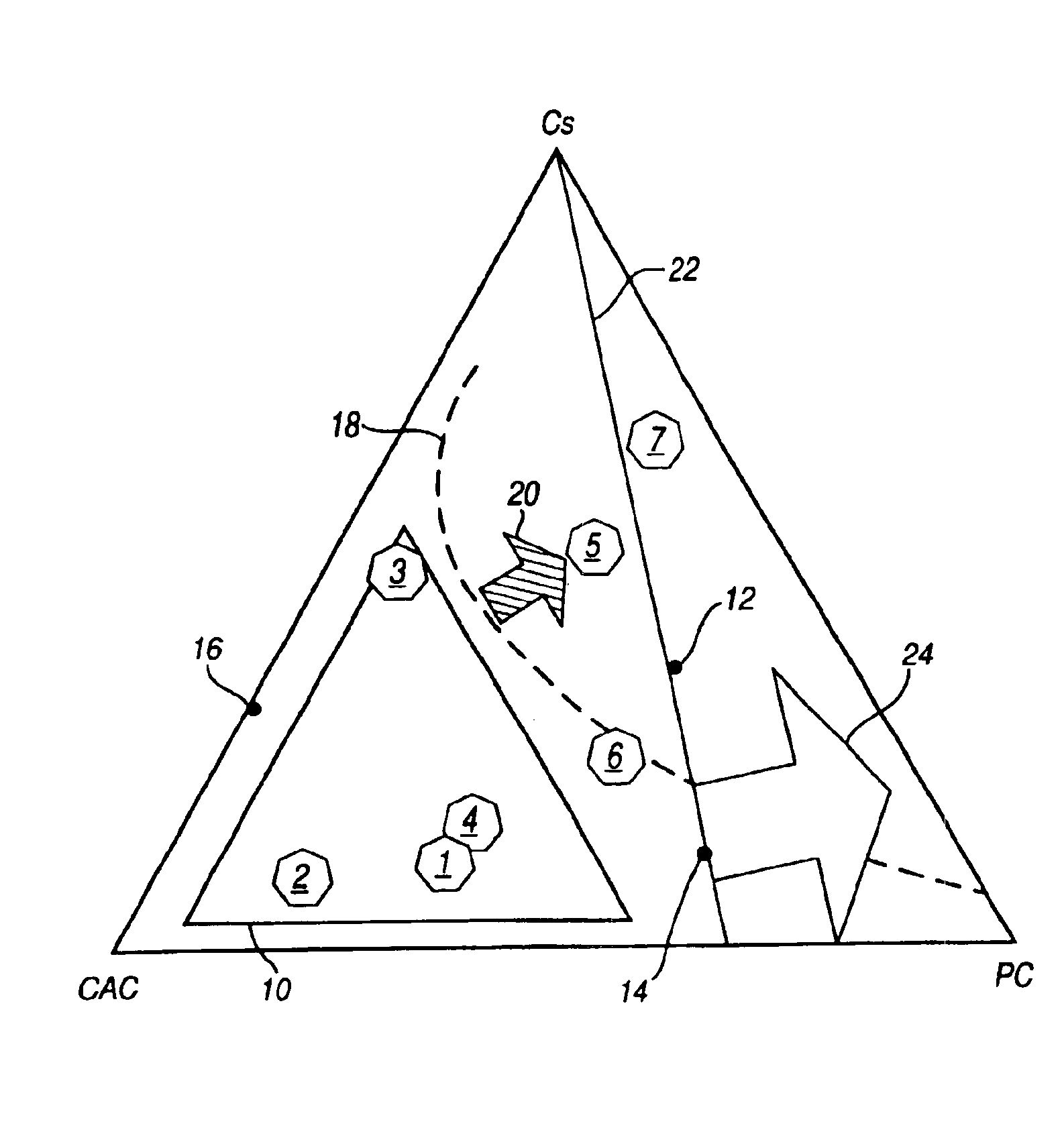Non-efflorescing cementitious bodies
a cementitious body and non-efflorescing technology, applied in the direction of sustainable waste treatment, manufacturing tools, solid waste management, etc., can solve the problems of unintentional production of salt, affecting the aesthetic quality of the product, and recurring problems
- Summary
- Abstract
- Description
- Claims
- Application Information
AI Technical Summary
Benefits of technology
Problems solved by technology
Method used
Image
Examples
example 2
[0073]As another example of a formulation according to the present invention, the following ingredients were blended together to form a hydraulic binder composition and were cast forming small blocks:
[0074]
Secar 5160.0%Anhydrite 7.0%Portland Cement 8.0%Ground Granulated Blast-furnace Slag25.0%
[0075]Pastes were made by mixing the above binder with water in a ratio of 0.32 parts water to 1 part binder. This sample did not show efflorescence in a foam test and its volume expansion when placed in water was substantially zero. Furthermore wetting and drying, in contrast to Comparative Example 5 below, did not seem to cause any detriment to the sample.
[0076]X-ray diffraction and Scanning Electron Microscopy of the body confirmed the presence of ettringite at the early stages, mono-sulphate, hydrated alumina and strätlingite. Calcium hydroxide was found not to be present.
example 3
[0077]As an example of a formulation just within the limit of the present invention, the following ingredients were blended together to form a hydraulic binder composition and were cast forming small blocks:
[0078]
Secar 5134.0%Anhydrite37.0%Portland Cement 4.0%Ground Granulated Blast-furnace Slag25.0%
[0079]Pastes were made by mixing the above binder with water in a ratio of 0.45 parts water to 1 part binder. This sample did not show efflorescence in the foam test and no visible signs of expansion when placed in water. Further wetting and drying did not seem to cause any detriment to the sample.
[0080]X-ray diffraction and Scanning Electron Microscopy of the body confirmed the presence of ettringite, some mono-sulphate, and a little hydrated alumina. Calcium hydroxide was found not to be present.
example 4
[0081]As an example of the strength development of mortars made with binder of formulation according to the present invention, the following ingredients were blended together to form a hydraulic binder composition:
[0082]
Secar 5145.6%Anhydrite13.0%Portland Cement20.4%Ground Granulated blast-furnace slag21.0%
[0083]Mortars were made by mixing the above binder composition with sand and water according to EN196 procedures(sand: binder ratio of 3 and water / binder ratio of 0.5). Blended together to form a mortar composition and tested according to the requirements of EN196: Not only was this mortar found to be non-expansive the strength development was very rapid in the early stages with a 6 hour compressive strength of 15.5 MPa and further strength development was also very good with 49 MPa being reached by 28 days.
PUM
| Property | Measurement | Unit |
|---|---|---|
| porosity | aaaaa | aaaaa |
| temperature | aaaaa | aaaaa |
| RH | aaaaa | aaaaa |
Abstract
Description
Claims
Application Information
 Login to View More
Login to View More - R&D
- Intellectual Property
- Life Sciences
- Materials
- Tech Scout
- Unparalleled Data Quality
- Higher Quality Content
- 60% Fewer Hallucinations
Browse by: Latest US Patents, China's latest patents, Technical Efficacy Thesaurus, Application Domain, Technology Topic, Popular Technical Reports.
© 2025 PatSnap. All rights reserved.Legal|Privacy policy|Modern Slavery Act Transparency Statement|Sitemap|About US| Contact US: help@patsnap.com

